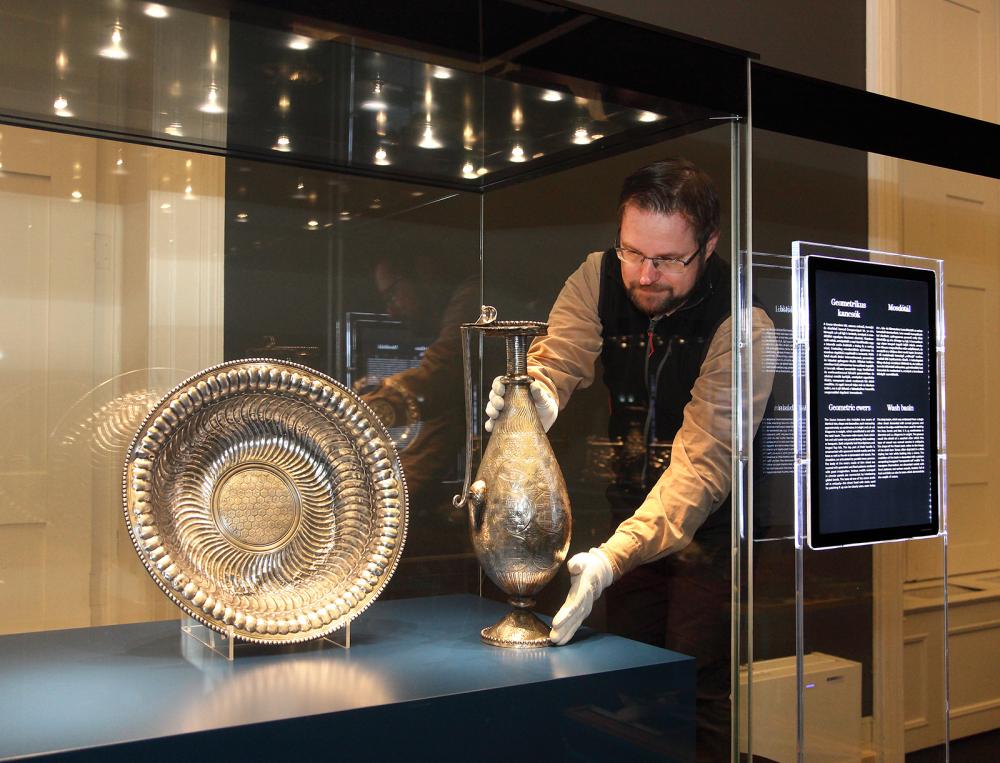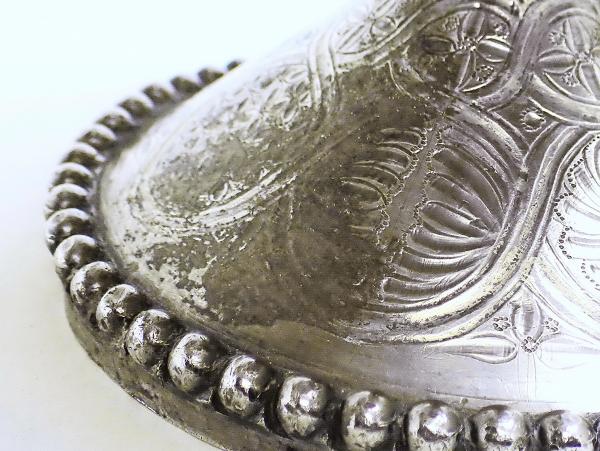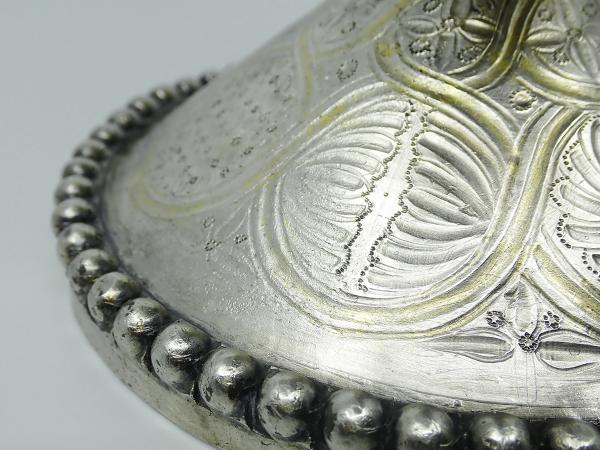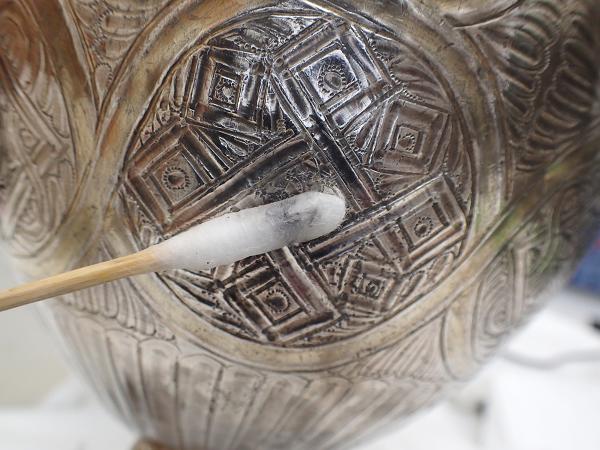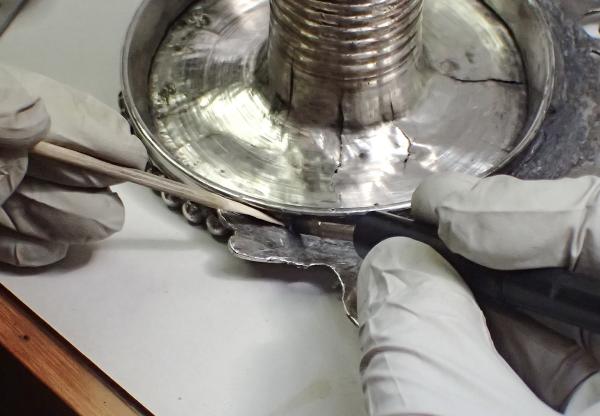The Seuso treasure is again restored after 30 years
Anna Bennett conserved the vessels of the find before the planned auction of the Seuso treasure in 1989. Besides cleaning and conserving the 14 silver vessels and the copper cauldron, the objects were examined as to their manufacturing techniques. They were also photographed and radiographed by x-ray, samples were taken for material analyses and all the 15 objects were drawn as well. In 1994 she published the results of her observation and analyses, as well as a summary of the conservation in a book written together with the then researcher of the Seuso treasure, art historian Marlia Mundell Mango.
The restoration of the treasure became necessary again in 2018. Since the interventions undertaken some 30 years earlier, the protective coating applied on the surface of the artworks had aged and the silver, due to the specific nature of the material, had darkened. In addition impurities that remained on the surface may be starting points of further damage in the future. These changes endanger the possibility of preserving the artworks in the long-term, therefore their treatment became fully justified.
The restoration of the Seuso treasure began in May 2018. After all the 15 objects had been examined visually and the microscopic, endoscopic and X-ray fluorescent analyses had been evaluated, we consulted with museologists and restorers – taking the complexity of the types of objects into account – and defined a sequence of treatment which would consider the archaeometric and archaeological research, as well as research in the manufacturing techniques and the aspects of exhibiting the treasure. In line with our earlier plans, restoration began with the geometric ewers. The sequence of restoring the other objects is determined by which items require the most urgent intervention. Judging by our preliminary assessment, the treatment of an object may require several months. With regard to its condition, each item is unique, so before beginning a restorer’s interventions we perform cleaning tests with the help of various model experiments following written, photographic and video documentation in each case, which includes every small detail. For the experiments special sample sheets are made of silver, on which we apply mechanical and chemical cleaning processes known from conservation literature, as well as methods and special materials we have individually developed. During conservation and restoration our primary aim is to apply processes as gently and effectively as possible, which stabilize the condition of the artworks and restore their aesthetic appearance authentically. We take samples of the carbonated soil remains impregnated with protective coating and left on the surface during the earlier restoration, from their bottom layers, the corrosion products, as well as from the deposits remained in the deeper corners of the surface. These and research performed by the archaeometric sub-project, i.e. the analysis of samples taken from the metal as well as the non-destructive material analysis, significantly contribute to determining the individual interventions by restorers. After ensuring the conditions required for treating these special silver artefacts and the satisfactory conditions of temperature and humidity in the restoration workshop, work could begin in May 2018 with the geometric ewers A and B, the geometric platter and the wash basin. We revealed corrosion products with a complex structure of layers on the surface of the objects. The top layer is an altered, glass-like hard covering, but underneath there is a layer with a far looser structure that can be separated well. In most cases they resist external mechanical and chemical treatment extremely well. A reason for this can be that materials used for the earlier conservation impregnated the corrosion layers and bound them to the surface of the objects, and owing to their aging their solubility could have changed. Cleaning is made more difficult because the hard, strongly binding corrosion products have to be removed from the object in such a way as not to damage the precious metal surface underneath.





It is a very time- and energy-consuming task, since the cleaning processes are always done under a stereomicroscope, proceeding from square millimetre to square millimetre, which requires a high degree of patience and precision. Thus the restoration of just the geometric ewer A took five months. On the basis of our experience with the geometric ewers, the corrosion spots and layers (depending on their size, morphology and cohesive characteristics) can be mechanically removed with the help of tools which are individually shaped and made by us from horn, bone, carbon, high purity silver and aluminium. We locally treat the strongly corroded parts chemically after the corrosion products have been thinned mechanically. Model experiments are being made during the restoration of the Seuso treasure and we pay great attention to the research of new restoration and conservation technologies in order to treat each vessel with methods and materials most suitable for its individual features and problems. With our professional skills we try to perform the responsible yet honourable task at the highest possible standard.
By Melinda Nagy, Norbert Németh, Balázs Lencz
